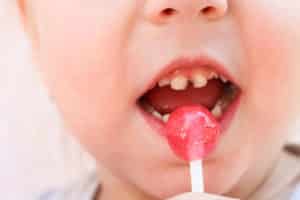Prevent Cavities from Your Halloween Candy


Studies show that trick-or-treaters can consume up to 675 grams of sugar on Halloween. That incredible sugar intake is not surprising, since Halloween is a major candy holiday. However, that candy contains the absolute worst ingredient that causes the teeth to decay: sugar. We want all our patients to have a fun Halloween and to even eat some yummy candy in the process. However, use these tips and recommendations for limiting sugar consumption and avoiding cavities that can happen later on!
Halloween Candy Facts
Halloween is the biggest candy holiday after Easter. Holidays often bring sweet treats and more indulgence in sugar foods. It’s the actual sugar content that is the main factor in raising a child’s risk for tooth decay.
These Halloween candy facts may shock you:
- On average, children and teens that trick-or-treat consume up to 675 grams of sugar on Halloween day alone. That’s about 3 solid cups of sugar in just one day! One cup of sugar is equivalent to 48 teaspoons of sugar.
- However, the recommended daily allowance for added sugars is only 6-9 teaspoons for females and males. Children should only have 6 teaspoons or less in one day, according to the American Heart Association.
- October 28th is the biggest candy-selling day of the year.
- The average family spends about $44 dollars on Halloween candy each year. Across the U.S., about $2.1 billion dollars is spent on Halloween candy.
- The amount of Halloween candy sold equals about 16 of the world’s largest ocean liners (or ships) in how much that candy would weigh.
- The main ingredient in Halloween candy (and candy in general) is sugar, which is directly related to tooth decay.

Why Is Sugar a Problem?
Eating sugar is one of the leading causes of tooth decay and gum disease, which are some of the most prevalent chronic diseases among children and adults. Gum disease affects more than 64.7 million American adults alone, and many more people have tooth decay. These diseases stem from sugar, as sugar decays your teeth. When you eat, sugars in your food combine with mouth bacteria to form plaque, which is a sticky, acidic substance that decays the teeth. The more sugar you eat, the more plaque you make.
You don’t just swallow plaque either. It sits on your teeth because it’s sticky and erodes your tooth enamel because it’s acidic. If it sits on tooth enamel long enough, plaque can break up the minerals in your teeth. That outer tooth enamel becomes weak and you will get cracks and open areas of your teeth. Plaque then gets inside the tooth, causing not only surface decay, but internal decay and infection as well. That decay is known as “cavities”, and cavities can lead to tooth loss. All of that weakening and decay stems straight back to sugar, which is found in almost all Halloween candy and in most foods you can buy from the store.
Preventing Cavities from Halloween Candy
You can significantly reduce your risk for cavities and disease by brushing and flossing your teeth several times a day, and especially after meals. However, not enough people brush and floss during the day—or at all—meaning that millions have cavities. There is a spike in cavities after Halloween in the months following, which is probably due to the high candy consumption. So what can you do?
If you’re a parent, make sure you are monitoring your child’s candy consumption and limiting how much they are eating. Children can be just as happy having a few small pieces of Halloween candy that night instead of 3 cups worth of sugar. It’s fine for children, teens and adults to have some candy on Halloween, as cutting out all sugar consumption can make the desire for sugar that much stronger. That can lead to bingeing on Halloween candy or sweet treats later on.

Some Tips
If your child gets a ton of Halloween candy, you can always use these tips to limit heavy consumption:
- Have a system in place where they earn their candy pieces. An example is that they get a sweet treat if they have read a book for a certain amount of time that day. Another is if they do really well with brushing and flossing during the day, they can have a treat at dinner.
- Do a trade. They can trade in 10 candy pieces for a small toy from a dollar store.
- Divide up the candy they can have each day after Halloween. Each day they can get the small bag with one or more pieces of candy.
- Always take their candy at night to avoid night eating and limit Halloween to be had only at mealtime. This prevents plaque production from all-day snacking.
Healthy Teeth for Fall and More
It’s very possible to enjoy your holiday or Halloween candy all fall and winter while still keeping your teeth healthy. Children don’t have to get child tooth decay and adults don’t have to get cavities either. Simply practice great oral hygiene and limit your sugar consumption! Adults and children alike should brush their teeth at least twice a day, if not after every meal. Both should floss 1-2 times a day. Help your children with brushing and flossing until they can do it for themselves. Then, monitor their brushing and flossing to make sure it’s done correctly.
All patients from infancy and on should be visiting their dentist at least twice a year as well. This is a time when we can spot the signs of cavities and stop them in their tracks. Small cavities are much easier to get rid of than large cavities that lead to tooth loss. If you want more tips for preventing cavities or you need to schedule your family’s dental exams, call Dr. Ania’s office today at 303-443-0998!


